One of my personal goals for this year is to become better at sketchnoting. And becoming better – for me – means: working at expanding my visual library and – more importantly – practice, practice, practice!
Last week I attended StarEast in Orlando, and testing conferences happen to provide a wonderful opportunity to get some of that much needed practice in.
Armed with a Confidant notebook (a new brand of notebooks by Baron Fig) and a set of sharpie pens, I went to work. Apart from the Selenium and Webdriver tutorial by Alan Richardson (hands-on coding does not match well with equally hands-on drawing), my keynote and the one preceding it (duh!) and a presentation about game testing of which I missed the first ten minutes, I took notes for every single talk I attended.
I like taking notes this way – the timed challenge provides me with much needed focus (no zoning out here), and the notes seem to stick way longer. As a bonus: even if the content does not particularly appeal to me, the added note taking practice still makes it worthwile.
So, without further ado, here goes:

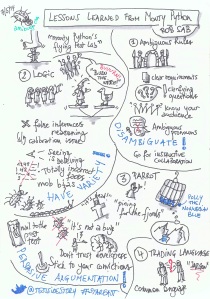
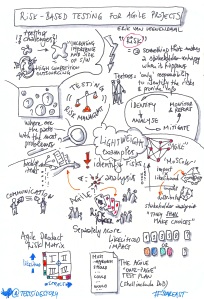
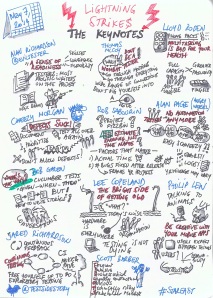
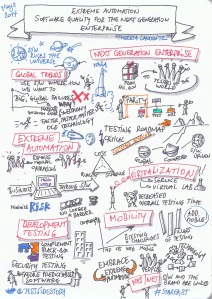
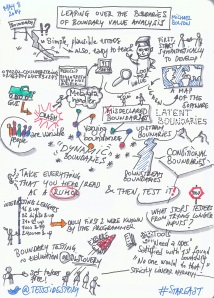
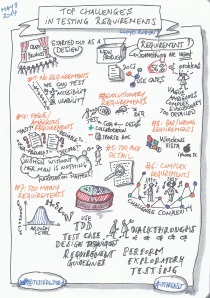
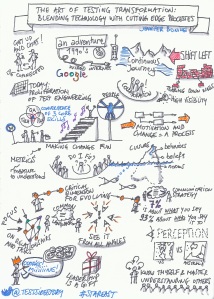
Nice sketchnotes Zeger!
I understand what you mean with “hands-on coding does not match well with equally hands-on drawing”.
But you can create a sketchnote afterwards while reflecting on the workshop. The benefits are a deeper learning experience and the content sticks longer.
I’m not a great sketcher but I think the content would stick with me more if I took notes this way. How do you decide which parts of discussion to draw? Any resources on how to take affective sketch notes?
Hi, Melissa. Choice of what to draw is one of the hardest to master, I find. In the beginning, I wanted to note down/draw everything, but that’s not very feasible. Try to identify the main ideas in a presentation (sometimes you can know that up front by reading its summary, sometimes you cannot know and you have to make educated guesses). Also, a sense of space and timing is very important – know upfront how much space you want your note to take and keep an eye on the time remaining. If the presenter is halfway in his/her talk and you’ve filled 3/4 of your page, you probably drew too much. Unless you can make it a 2-pager, it depends. A good resource is Mike Rohde’s Sketchnote Handbook (http://rohdesign.com/book/). For visual libraries, I have found the Bikablo books very useful (http://www.neuland.com/EU/dialogwerkzeuge-jc4rdwszaiw/bikablo-1-6s5uy80465f.html)
Thanks Zeger – These are Owsome and educative
Especially to those of us who did not attend and wish to get a glance of raised issues & ideas.
Hope you will keep practicing sketchnotes taking and share next activities here in this highly useful format.
Kobi